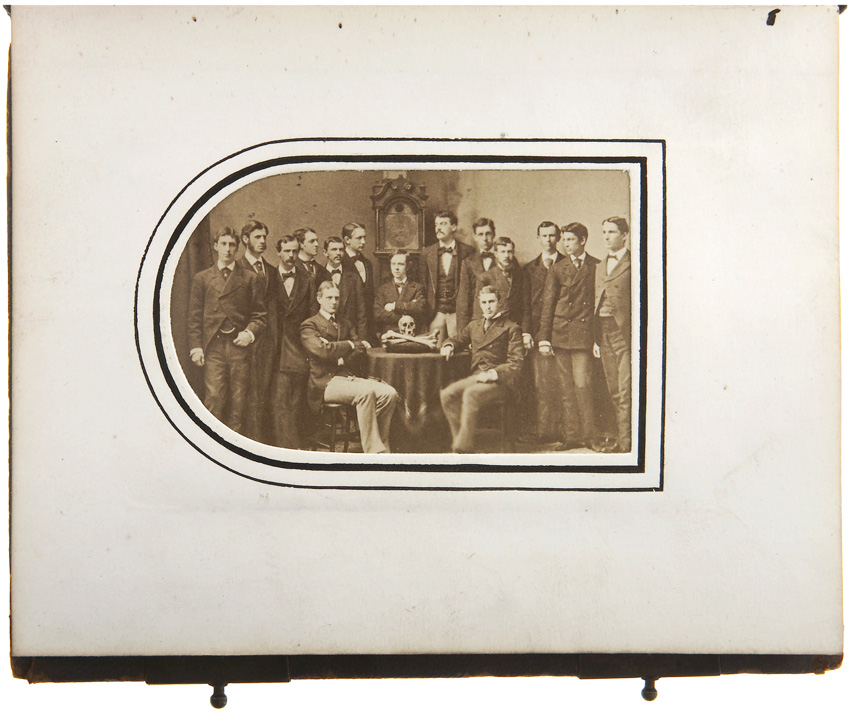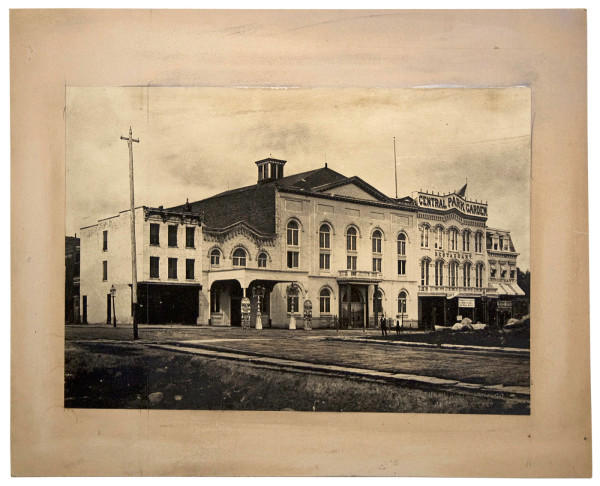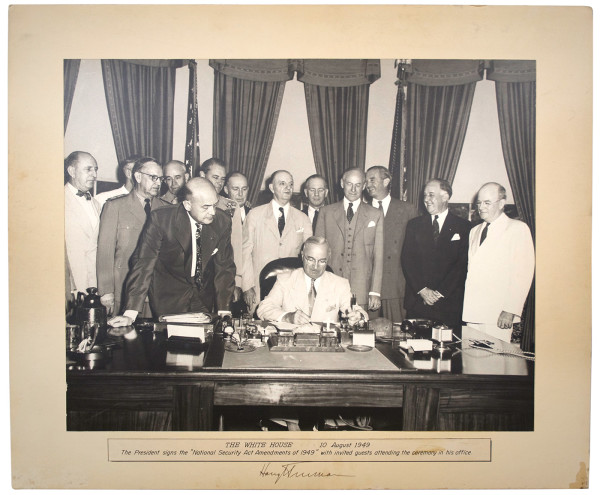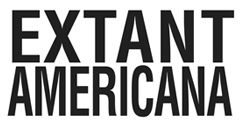
(Skull & Bones Society) A superb collection related to the infamous Yale secret society that counts several presidents together with top diplomats and financiers among its alumni. The group features a gold Skull and Bones lapel pin together with a leather-bound photograph album bearing cartes de visite of its members from the class of 1872.
The collection, from Edward T. Owen, a member of the class of 1872 includes his gold lapel pin with the skull emblem on top (the crossed bones over the number “322”, measuring 3/4 in. width with a hinged straight pinback. The reverse is engraved “E. T. Owen”. Owen’s pin is accompanied by a leather-bound photo album containing eighteen cartes de visite one of each of the members of the class of 1872, a group image posed with the skull & bones, the skull & bones alone, as well as an image of the society’s home, “The Tomb.” The collection also includes five additional cartes of Skull & Bones members not part of the Class of 1872.
Edward Thomas Owen entered Yale University with the class of 1871 and joined the class of 1872 at the beginning of his senior year. After graduation Owen studied two years at the Georg-August-Universität Göttingen in Germany and a year in Paris. He returned to the United States as a professor of French and Linguistics at the University of Wisconsin. Owen, with the Mutton Chops facial hair, is pictured wearing this pin. The roster of the Skull and Bones Class of 1872 records only fourteen members; however, there are fifteen cartes de visite in the members section of the album and an equal number in the group image. In addition to Owen the other Bonesmen in 1872 were: Robert Elmer Coe, who died shortly after graduation in 1872 of typhoid fever; William Lee Cushing who taught at Yale and founded the Westminster School in Dobbs Ferry, New York; Charles Clerc Deming, who, after graduating from Columbia Law School, became vice president of the Jacksonville, Tampa, and Key West Railway Company; Henry Champion Deming, secretary and treasurer for the Mercantile Trust Company of New York; Frederic Shepard Dennis, a professor of surgery at Bellevue Medical College; John Howard Hincks, an ordained minister who served as dean of Atlanta University and professor of History and Social Science; Benjamin Hoppin, a German translator; Alexander Ross Merriam, a pastor; George Foot Moore, also a pastor; Henry Silas Payson, who practiced law in St. Louis, before he retired to Payson Farms at Mossville, Illinois; Charles Benjamin Ramsdell, who graduated from Union Theological Seminary and became a pastor; George Atherton Spalding a physician at the House of Refuge, Randall’s Island, New York; and, Theodore Salisbury Woolsey a professor of law at Yale Law School.
Cartes and pin quite clean, expected wear to binding of photographs, overall very fine.
(EXA 3881) SOLD.

(Theatrical History) A 6 3/4 x 9 1/2 in. (on a 9 1/2 x 11 1/2 in. mount) photograph by The H. N. Tiemann Company of New York showing the now defunct Central Park Garden on Seventh Avenue near 58th Street which served as a venue for classical music in the latter half of the nineteenth century. The music hall opened in 1868 and for some time was controlled by the opulent financier James Fisk. Standing on the west side of Seventh Avenue between 58th and 59th Street, the Garden offered a restaurant together with nighty concerts in the summer months in an open air “promenade” or “garden” in the rear of the theater. Appleton’s Illustrated Hand-book of American Cities declared that the concerts held at the Garden were “musical entertainments of the highest order.” In 1876 the proprietors of the Garden purchased a larger building (in this image the building just to the left of the three story building bearing the “CENTRAL PARK GARDEN” sign on its roof), and the venue began hosting more diverse events including dramas and natural history lectures. The building remained in use as a music hall until the late 1880s when it became the Central Park Riding Academy. The buildings were demolished in 1921 to make way for Jolson’s 59th Street Theatre, constructed by Lee and J.J. Shubert and named after Al Jolson, who premiered Sigmund Romberg’s musical Bombo there on 6 October 1921. The next several years brought a slew of new owners and consequent name changes to the venue, including the Central Park Theatre (a movie house), the Shakespeare Theatre, the Molly Picon Theatre, the Venice Theatre, The Yiddish Theatre, and twice reverted to honoring the theatre’s original namesake, Al Jolson, before relaunching as the New Century Theatre in 1944. The New Century Theatre was shuttered in 1954, and demolished in 1963 to accommodate the site’s current occupant, the luxury residence 200 Central Park South.
Some toning and soiling toward margins and on mount, else very good overall.
(EXA 3898) $400

Harry S. TRUMAN (1884 – 1972) An enormous photograph, 19 1/2 x 15 1/4 in. (black & white) on a 24 x 20 in. mount captioned “THE WHITE HOUSE… The President signs the ‘National Security Act Amendments of 1949’ with invited guests attending the ceremony in his office.” Signed on the mount below the caption, ”Harry Truman” as President. Together with a second mounted photograph of similar dimensions depicting an alternate view of the signing ceremony.
National Security Act of 1947 created the cabinet post of Secretary of Defense and combined the Department of the Army and Department of the Navy into the combined National Military Establishment. However, the first Secretary of Defense, James Forrestal did not enjoy sufficient power to be effective as the Secretaries of the Army and Navy still enjoyed quasi-cabinet level . The amended act of 1949, signed into law by Truman on 10 August 1949 aimed to rectify this situation, created the Department of Defense which unified the several service branches in one federated structure. The modernization of the structure of the armed forces was a key component in Truman’s Cold War strategy.
Minor glue remnants and toning, photographs slightly lifting from mount, else very good condition. Together, two pieces.
(EXA 3886) $1,450



